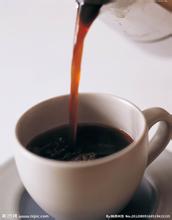Introduction to the flavor and taste of high-quality coffee beans in Panama Cupid coffee producing area
Panamanian land use: arable land accounts for 8.9%, permanent pastures account for 20.0%, forests and woodland account for 43.0%, others account for 28.1%; per capita arable land accounts for 0.6 acres. [2]
Mineral resources
Panama is rich in mineral resources, but it is not exploited much, and the scale of the mine is small. The main minerals are gold, silver, copper, iron, mercury, bauxite, manganese, salt, oil and so on. The reserves of copper, salt and bauxite are relatively large. As of 2013, Panama has more than 200 million tons of copper ore, ranking fourth in the world. The proven copper reserves can be mined for 50 years.
Forest resources
Panama is rich in forest resources and has many tree species, including valuable wood such as mahogany, cedar, teak, mahogany, and cedar. The forest area of eastern Dalian Province is the most widely distributed, but it has not been fully developed due to lack of market and for reasons such as national defense and protection of the natural ecological environment. [5] according to FAO estimates in 2010, the forest area of Panama is 4.29 million hectares, accounting for 57% of the land area.
The Emerald Manor brings geisha to coffee drinkers all over the world. before setting off the rosy summer red cap, she turned out to be a member of the windbreak on the edge of the coffee forest, because the variety of geisha coffee below 1400m has no economic value because of its mediocre flavor and extremely low yield. however, if planted in an altitude area above 1500m and tempered by the cold wind, it will show a unique flavor spectrum. Emerald Manor owner Peterson and his son stumbled upon the secret and set out to plant Geisha independently and participate in the 2004 BOP competition with Hara Miyou selection (Jaramillo Special), which brought out the world geisha craze.
Where exactly does Geisha come from?
According to the data of all parties, the spread route is roughly as follows: in 1931, the British envoy went to Geisha Mountain in Ethiopia to collect disease-resistant bean seeds-- 1931-1932 seeds were spread to Kitale in Kenya under the names of Geisha and Abyssinian-- young plants were transplanted in 1936 to the Ryan Mugu Coffee Research Institute (Lyamungu) in Uganda and Tanzania-1953 Costa Rica's CATIE Coffee Research Institute has repeatedly introduced young plants from Ryan Mugu and other countries-Don Bach, a coffee farmer in Panama, introduced disease-resistant geisha varieties from CATIE in 1963. Although there are materials to prove it, geisha have been around for decades, it is difficult to determine whether today's geisha are the seeds introduced at that time, and whether they have experienced hybrids is no longer known.
The unique orange flavor of Panamanian geisha, with the "orange gene kissed by God", must have benefited from the protection of good mountains and water in Panama. The low temperature and stable climate at high altitude makes the coffee here grow slowly and the beans are hard. All have a unique and strong flavor. Although geisha is good, its output is really limited. The annual production of geisha in the Jade Manor is less than 12 tons, and the top grade is no more than 200 to 300 kilograms, so it is difficult to satisfy the taste buds of coffee lovers all over the world. as a result, major well-known producing areas around the world have stepped up the trial of geisha, trying to show different landforms and different flavors of geisha.
Panama's geographical conditions from east to west let the cold air flow through the Central Mountains converge to more than 6500 feet, thus forming a variety of unique microclimates in Boquete, Volc á n, Candela, Santa Clara and other places, coupled with nutritious and balanced volcanic ash soil, these areas have also become Panamanian coffee and famous producers of the world's top boutique coffee.
Coffee cultivation in Panama began with the first batch of Typica coffee seedlings brought by Europeans in 1780, and today it has been developed and planted with Typica, Caturra, Catuai and Geisha varieties, producing jasmine, citrus, ripe fruit, berries, caramel, special sweetness, vanilla, chocolate and other flavors. According to the variety, the output of Panamanian coffee is small, only 240t per year, and Geisha is less than 5%. Panamanian coffee is mostly washed, refreshing and clean can highlight the citrus aroma of geisha, but in recent years, sun geisha also has quite a bright spot, and the transaction price often exceeds that of water washing.

Important Notice :
前街咖啡 FrontStreet Coffee has moved to new addredd:
FrontStreet Coffee Address: 315,Donghua East Road,GuangZhou
Tel:020 38364473
- Prev

Introduction to the high-quality coffee bean manor with the characteristics of fragrant Ecuadorian coffee producing areas
The Arabian Coffee Tree was first introduced to Ecuador in 1952 and its coffee is of good quality, especially the coffee harvested in early June. Ecuadorian coffee beans can be divided into two varieties: Galapagos and Gigante, both of which have the characteristics of large granules and heavy weight. Ecuadorian coffee can be divided into first class (No.1) and super excellent (Extra Superior) according to its quality.
- Next

Guatemala Antigua Coffee Variety producing area characteristics of Fine Coffee Bean Manor
Located in the northern part of Central America, Guatemala is located in the geographical area of Guatemala, bordering Mexico, Belize, Honduras and El Salvador. Bounded by the Pacific Ocean to the south and the Gulf of Honduras in the Caribbean to the east, and bordering Mexico, El Salvador, Honduras and Belize on land, United Fruit has a total area of 108889 square kilometers in Guatemala.
Related
- Detailed explanation of Jadeite planting Land in Panamanian Jadeite Manor introduction to the grading system of Jadeite competitive bidding, Red bid, Green bid and Rose Summer
- Story of Coffee planting in Brenka region of Costa Rica Stonehenge Manor anaerobic heavy honey treatment of flavor mouth
- What's on the barrel of Blue Mountain Coffee beans?
- Can American coffee also pull flowers? How to use hot American style to pull out a good-looking pattern?
- Can you make a cold extract with coffee beans? What is the right proportion for cold-extracted coffee formula?
- Indonesian PWN Gold Mandrine Coffee Origin Features Flavor How to Chong? Mandolin coffee is American.
- A brief introduction to the flavor characteristics of Brazilian yellow bourbon coffee beans
- What is the effect of different water quality on the flavor of cold-extracted coffee? What kind of water is best for brewing coffee?
- Why do you think of Rose Summer whenever you mention Panamanian coffee?
- Introduction to the characteristics of authentic blue mountain coffee bean producing areas? What is the CIB Coffee Authority in Jamaica?

